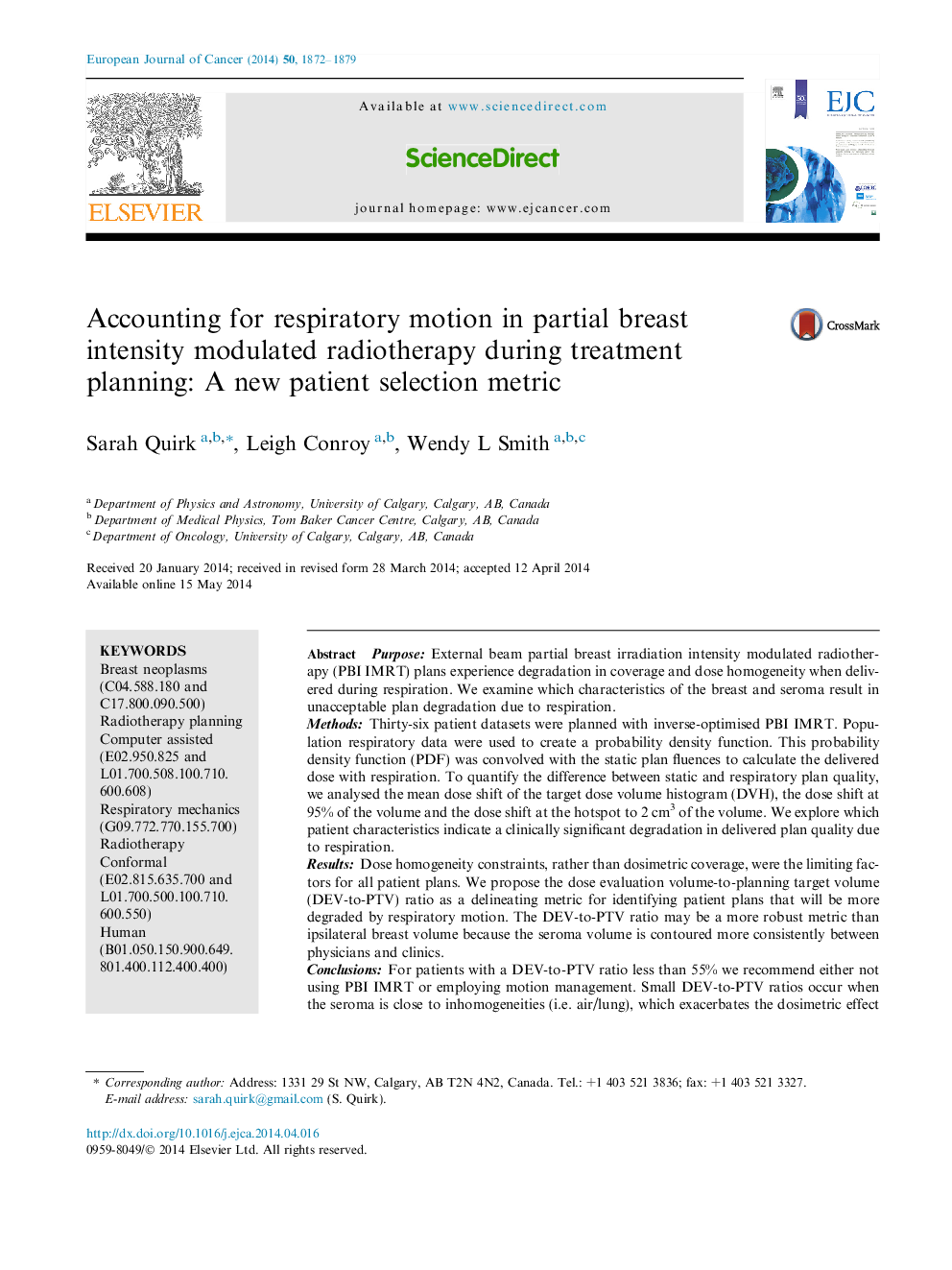| کد مقاله | کد نشریه | سال انتشار | مقاله انگلیسی | نسخه تمام متن |
|---|---|---|---|---|
| 2122012 | 1547117 | 2014 | 8 صفحه PDF | دانلود رایگان |
PurposeExternal beam partial breast irradiation intensity modulated radiotherapy (PBI IMRT) plans experience degradation in coverage and dose homogeneity when delivered during respiration. We examine which characteristics of the breast and seroma result in unacceptable plan degradation due to respiration.MethodsThirty-six patient datasets were planned with inverse-optimised PBI IMRT. Population respiratory data were used to create a probability density function. This probability density function (PDF) was convolved with the static plan fluences to calculate the delivered dose with respiration. To quantify the difference between static and respiratory plan quality, we analysed the mean dose shift of the target dose volume histogram (DVH), the dose shift at 95% of the volume and the dose shift at the hotspot to 2 cm3 of the volume. We explore which patient characteristics indicate a clinically significant degradation in delivered plan quality due to respiration.ResultsDose homogeneity constraints, rather than dosimetric coverage, were the limiting factors for all patient plans. We propose the dose evaluation volume-to-planning target volume (DEV-to-PTV) ratio as a delineating metric for identifying patient plans that will be more degraded by respiratory motion. The DEV-to-PTV ratio may be a more robust metric than ipsilateral breast volume because the seroma volume is contoured more consistently between physicians and clinics.ConclusionsFor patients with a DEV-to-PTV ratio less than 55% we recommend either not using PBI IMRT or employing motion management. Small DEV-to-PTV ratios occur when the seroma is close to inhomogeneities (i.e. air/lung), which exacerbates the dosimetric effect of respiratory motion. For small breast sizes it is unlikely that the DEV-to-PTV ratio will meet these criteria.
Journal: European Journal of Cancer - Volume 50, Issue 11, July 2014, Pages 1872–1879
